Join us on August 29 at 7pm Pacific Daylight Time for the first edition of Science Fiction Theater—every week, we'll broadcast an excellent show or two, accompanied by fanzine readings and, of course, with commercials!

By Mx Kris Vyas-Myall
In general, there is a certain patriarchal attitude us Brits have towards the Commonwealth. We assume we will be the mother country that will be investing in and helping out the former colonies. Yet recent evidence suggests the opposite is true. And now we see it in publishing with the plan to rescue The Sun newspaper by 37-year-old Australian entrepreneur Rupert Murdoch.

Australian press-magnate, Rupert Murdoch
Back in 1964, the Daily Herald was Britain’s 4th biggest selling newspaper, with a specific interest in advancing the trade union movement. However, it was still losing money as its readership were generally older and of lower income—not the audiences advertisers wanted. The paper was folded and replaced by The Sun, designed to appeal to the “steak-eating weekenders” of the aspirational working class. However, this did not end up reviving its fortunes and International Publishing Corporation was losing £2m a year on the paper. As such they have declared they need to sell or shutter it by January 1970.
Also in 1964, Rupert Murdoch, having inherited News Ltd. from his father in 1954, launched Australia’s first national newspaper, The Australian, to compete with the established state papers. He got the local papers he controlled to move away from “stodgy” local news items, into human interest and television interests. This all led to the company’s profits rising from £30k to £1.2m. But he continues to have ambitious plans for expansion.
Having already beaten out Paul Maxwell to take over the weekly News of the World at the start of the year, the acquisition of The Sun will mean he has a daily publication under his belt. What he will do with it remains to be seen but sensationalism may be the order of the day. His News of the World has already attracted controversy by publishing extracts from Christine Keeler’s memoirs.
Whatever the fate of these papers, another collaboration has interested me. That between Australian publisher Ronald E. Graham, and British editor Philip Harbottle. United by their love of John Russell Fearn, they have put out a new Science Fiction magazine, Vision of Tomorrow.
Vision of Tomorrow #1

Cover by James
In spite of initial reports, this will not contain any John Russell Fearn reprints (a secondary magazine may be produced for that purpose in the future) rather “Vision” is dedicated only to publishing new stories by British and Australian authors, along with new translations of European authors.
In contrast to the semi-professional style of Alien Worlds or the arthouse feel of New Worlds, this feels like a traditional professional magazine. One that could sit in the racks happily beside Analog and Galaxy, albeit a 64 page slick, rather than the advertised 196 page pocket book. But what is inside?
The New Science Fiction by Philip Harbottle
In his editorial for the magazine, Harbottle sets out his stall. He declares that this magazine will deal with humanity trying to adapt to the increasing pace of change. Personally I think this sounds rather similar to what Gold was attempting in Galaxy in the 50s.
Swords for a Guide by Kenneth Bulmer
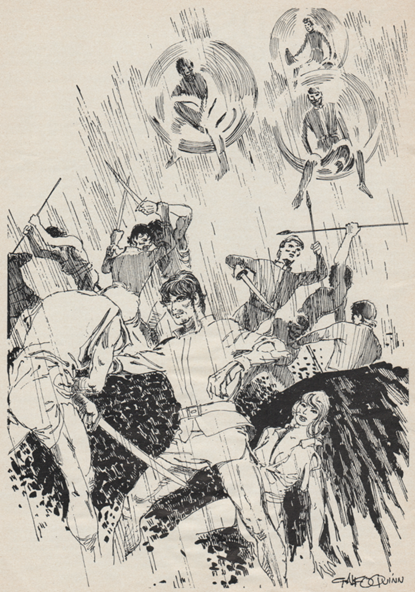
Illustrated by G. Alfo Quinn
As the sole member of the Kenneth Bulmer Fan Club [Not quite true—Jason Sacks likes him, too! (ed.)], I was excited to see he would be leading the magazine. Here Jeffrey Updike Grant is a Captain in the Guides, a kind of Galactic Administration military force, but one trained only to use weapons equivalent to the technological level of the alien planets they are on. When he is stationed on New Bangor, an uprising takes the Guides by surprise.
After a distress call is sent out, it is answered by local freetraders (read smugglers) who have no truck with the rules on technological advances. Whilst they initially push the Bangorians back, they are eventually overpowered and their atomic weaponry ends up in the hands of the natives. With the natives now aware that the Guides are not from this world and in possession of advanced weaponry, the chances of survival for the Terrans are slim. Their only hope is to travel down river to the largest settlement, with the natives hunting them.
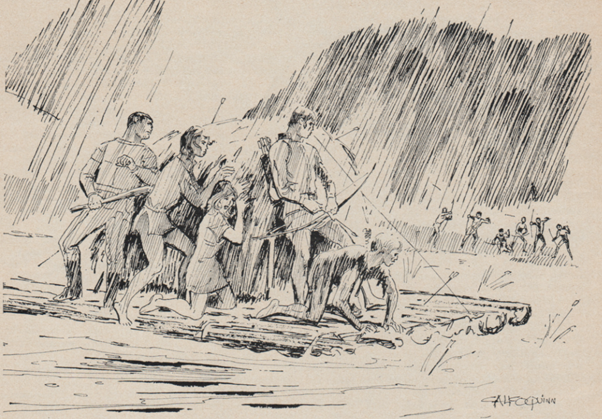
Illustrated by G. Alfo Quinn
Whilst I usually enjoy Bulmer’s work, this is not his standard fare, more a Victorian Boys-Own adventure, with lots of action and heavy descriptions, but not much depth. There is possibly some critique of colonialism at the end, but this work primarily seems designed to appeal to those that lament the loss of a “sense of wonder” in SF today. I am not one of those people.
Two Stars
When in Doubt – Destroy! by William F. Temple
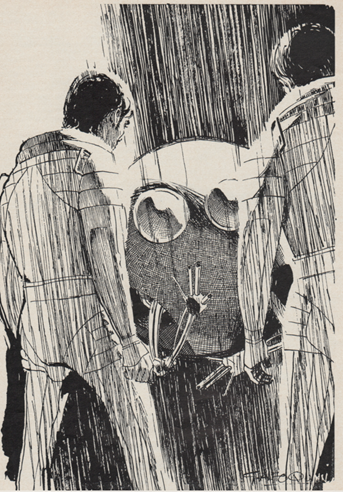
Illustrated by G. Alfo Quinn
Pathfinders Cordell & Marston are surveying the Pluto-esque Scylla-8, awaiting a much-delayed supply ship. Instead, a robot named Mark 1105 appears. It tells them it has captured their ship along with a previous survey mission, and they will be imprisoned, without food or water, until they answer its questions about humanity.
This has a great moody sense of doom penetrating throughout and it has interesting ideas about psychology. Unfortunately, I found it let down a bit by using a very old and silly cliché to battle a robot.
Three Stars
Anchor Man by Jack Wodhams
Tirk and Ken are members of the experimental EPD, where psychic impressions of objects and people are used to investigate police cases. Mary Pantici, a prostitute, is found murdered in a sound proofed flat with no witnesses and the EPD is brought in for the first time on a case like this. Ken is indeed able to get an impression of the murderer. However, his gift leads him to the conclusion that the killer is a police officer, one who has mental abilities of his own.
Given Wodhams’ regular sales to Analog, and the centrality of ESP to the tale, I can’t help but wonder if this was meant for Campbell but was rejected because of the grimmer elements. Whatever its origin this is a reasonable update of the occult detective story, well told but with a bit of a limp denouement for me.
Three stars
The Vault by Damien Broderick
Dr delFord, a logician, is awoken at 3am and taken on a secret flight. His old friend Gellner reveals to him that, under the lunar crater Tycho, an ancient buried computer complex has been discovered.
Much of it seems to have been destroyed in a nuclear attack; however, they are able to deduce from a map the location of two other alien bases. One at the bottom of the Atlantic and one under Ayres Rock. It is to the latter one that delFord is flown. The titular Vault inside Uluru does not allow any electronic equipment in and so far has resulted in the deaths of 173 people trying to enter it.
With a new protective suit, delFord has one hour to try to work a way in, discover all he can and make it out alive.
It has become fashionable of late to claim every piece of mythology or construction project before 1945 is secretly the work of aliens (see, for example, Chariots of the Gods?). This sits within that genre. Not bad per se, but I feel that it could easily be made into an unremarkable episode of Star Trek or Doctor Who.
Three Stars
Sixth Sense by Michael G. Coney
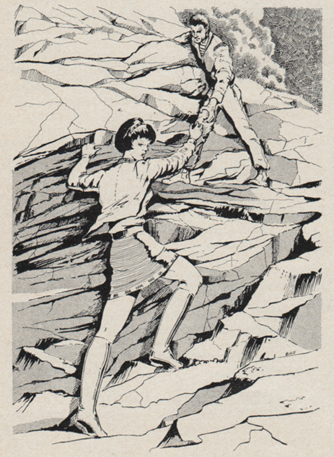
Uncredited illustration
This short story comes from a new writer who recently debuted in the pages of New Writings. Jack Garner is a publican who possesses a sixth sense others don’t. He recalls a summer three years before when a quarrelling family came to stay and how he made use of his unusual ability to help them.
The actual plot is fairly thin, being the kind of tale you would read as the text feature in an adventure comic, padded out with mind-reading sections. In addition, there are leering descriptions of a 14-year-old girl’s body from the point of view of our 37-year-old narrator. Less than this got Mr. Hedges branded a pervert by the local community in an episode of Please, Sir!.
One Star
Consumer Report by Lee Harding
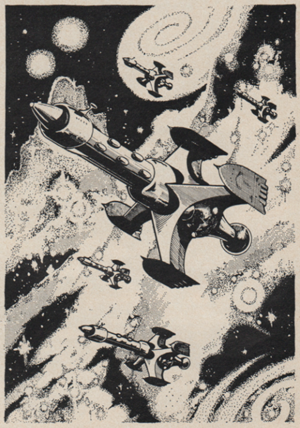
Uncredited illustration
Previously one of Carnell’s crew, he wrote one of my favourite short stories of the decade, The Liberators, but I haven’t seen anything from him in a few years.
Crossing the spaces between galaxies the self-proclaimed Lords of their universe come on a mission of conquest, but they find only dead planets. What could have caused this?
Thankfully, this is not one of those awful John Brunner vignettes we usually see in Galaxy. Instead, Harding gives us a serviceable but unremarkable piece of space horror.
Three stars
Are You There, Mr. Jones? by Stanislaw Lem
This is a work from a leading Polish SF writer (translated by Peter Roberts) representing his first appearance in English. It tells of the legal case of Mr. Jones, a race car driver who has replaced parts of his body with cybernetics following various accidents. He has been unable to pay his debt for them and, indeed, claims they are faulty so he should not have to. However, a previous court ruled he could not have them removed as it would kill him.
As such the Cybernetics Company tries a new tact, arguing that as so much of him is replaced, he is no longer human and they are merely recovering their property.
I have heard from continental friends that Lem is already well liked in Germany and France, and this showed me why. This is only a short vignette but addresses fundamental questions in a concise and amusing manner.
Four Stars
The Impatient Dreamers Part 1: First Encounters by Walter Gillings
The editor of the first British SF magazine begins a history of 20th Century British Science Fiction. A largely auto-biographical piece, this opening section tells of the early days of British fandom in the 20s and 30s, talking of the influence of imported American magazines, short lived fandom, Edgar Rice Burroughs books, BBC Radio dramas and the film Metropolis. An interesting and pleasant introduction to an era before I was born.
Four Stars
The Shape of Things To Come
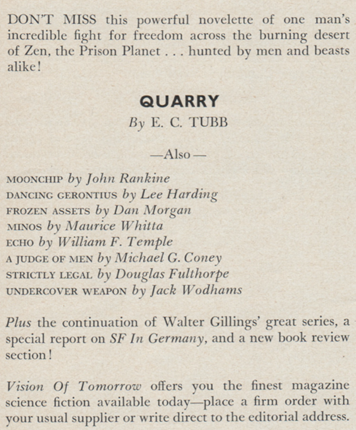
Coming next time
In spite of Harbottle’s introduction discussing the New Science Fiction, this is quite a traditional selection of stories, although generally solid ones. It is certainly no worse than we see from If or Analog and the one weak piece being from a new author I hope we can see more of.
As such, I am excited to see more of this collaborative exercise. Bring on the second issue.
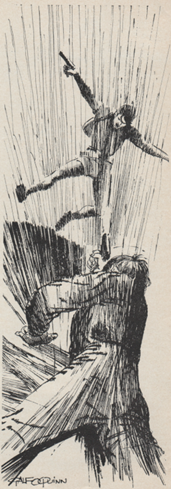
One final illustration from G. Alfo Quinn

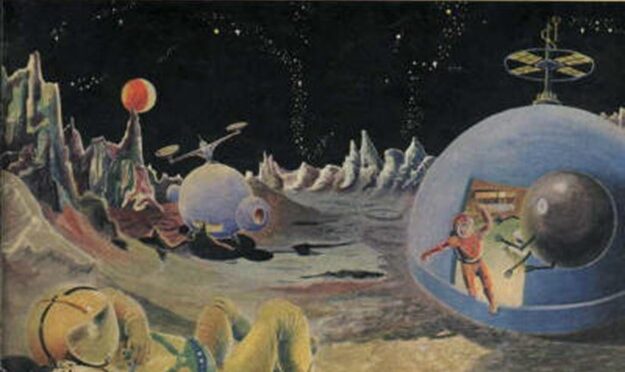
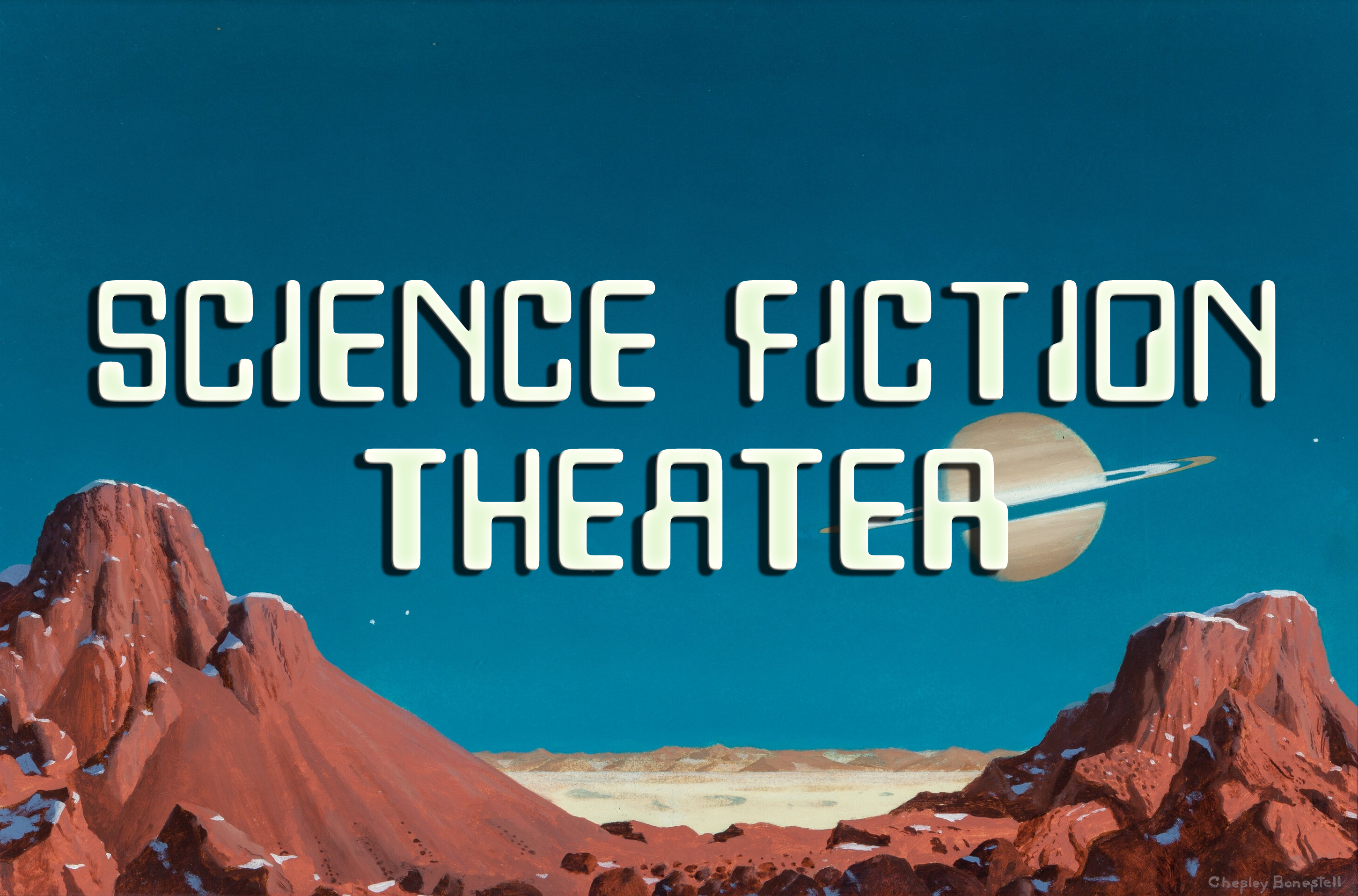


I never heard of this magazine and — in an admittedly dismal month — they've fielded a better roster of authors than any of the American presumed mainstays like F &SF, ANALOG, and Galaxy.